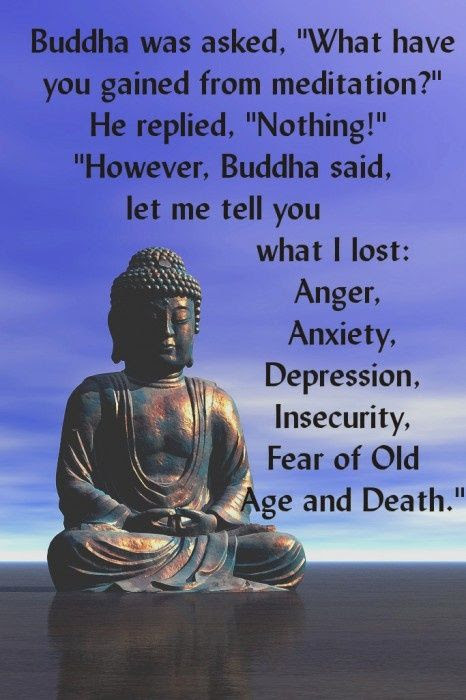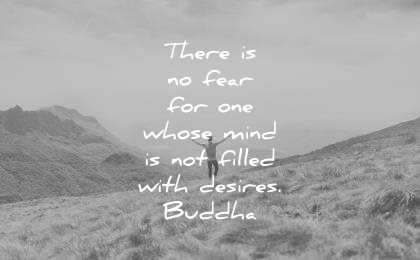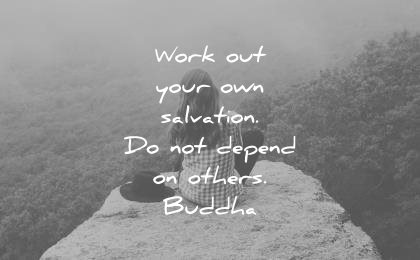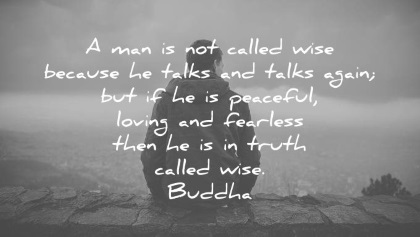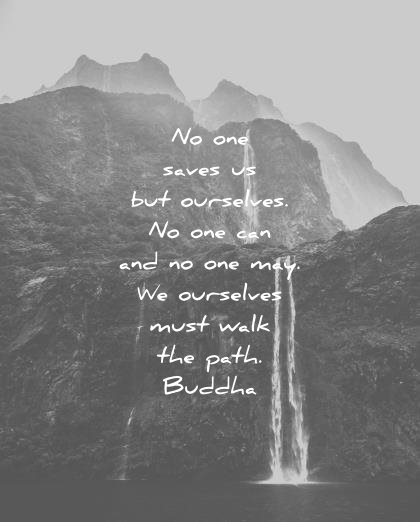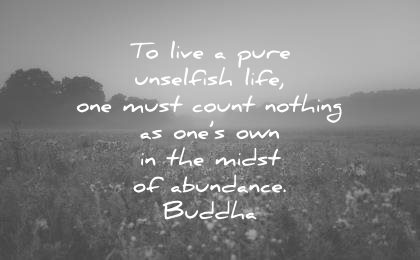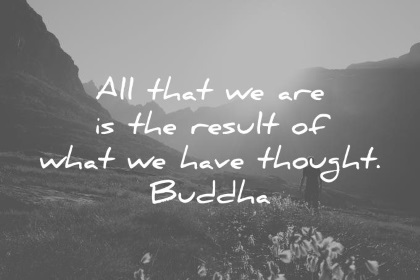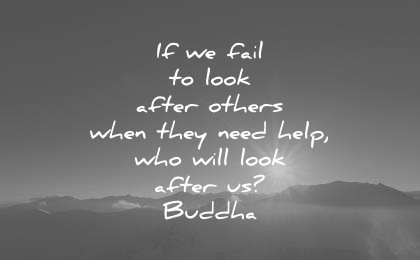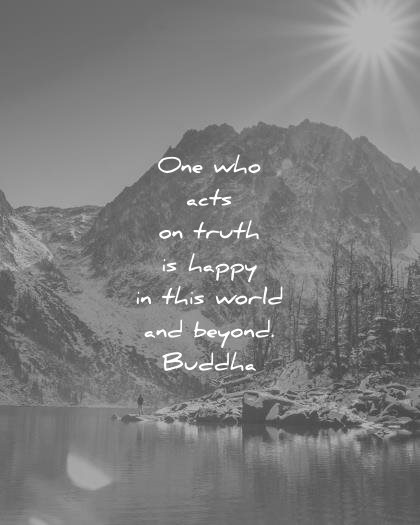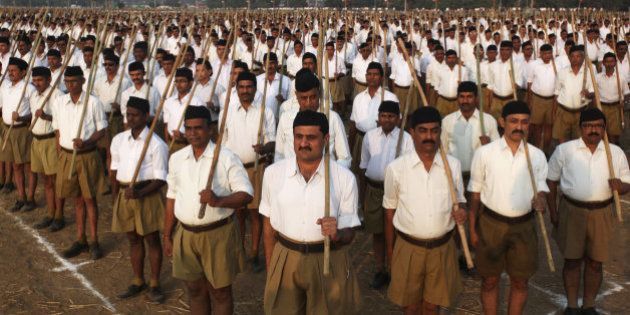People are finding the truth now. Power of western freedom and platforms
to research and communicate truth as it is- from people to people
without any perverted intermediary. Thanks Jose Kissinger. Your time and
energy is energizing. We are the beneficiaries of your research and
knowledge. For Tamils, four other stalwarts to follow are Anthony
Fernando, Bala G and Valasavallavan, Kalai Mathi..as far as I know.
Amazing friends!Jose Kissinger:
இன்று
யூதன் என சொல்லிக்கொள்ளும் யூதனில் 98% யூதனே கிடையாது, அதுபோல
இந்துக்களின் காவலன் என சொல்லிக்கொள்ளும் RSS ன் தோற்றுவிப்பாளர்கள்
இந்துக்களே கிடையாது.
98% யூதர்கள் ஹஸாரியர்கள், செமிடிக் (சேம் மின் சந்ததி) இனக்குழுவே கிடையாது. RSS நிறுவனர்கள் இந்த ஹஸாரியர்களே!
Chitpavans. The more contemporary theory is based on the etymology of
their name meaning “pure of mind”, while an older belief uses the
alternate etymology of “pure from the pyre” and is based on the tale of
Parashurama in the Sahyadrikhanda of the Skanda Purana.[7][8] The
Parashurama myth of origin is identical to the myth that claimed by the
Bene Israel of the Kolaba district. According to Bene Israeli myth, the
Chitpavan and Bene Israel are descendants from a group of 14 people
shipwrecked off the Konkan coast. One group converted to Hinduism as
Chitpavan Brahmins, the other remained Jewish or Bene Israel.
After the fall of the Maratha Empire in 1818, the Chitpavans lost their
political dominance to the British. The British would not subsidize the
Chitpavans on the same scale that their caste-fellow, the Peshwas had
done in the past. Pay and power was now significantly reduced. Poorer
Chitpavan students adapted and started learning English because of
better opportunities in the British administration.[17]
Some of
the prominent figures in the Hindu reform movements of the 19th and 20th
centuries came from the Chitpavan Brahmin community. These included
Dhondo Keshav Karve,[26] Justice Mahadev Govind Ranade,[27] Vinayak
Damodar Savarkar,[28][29] Gopal Ganesh Agarkar,[30] Vinoba
Bhave.[31]Wolpert, Stanley A. (April 1991). Tilak and Gokhale:
Revolution and Reform in the Making of Modern India. Oxford: Oxford
University Press. p. 32. ISBN 978-0195623925.
Some of the
strongest resistance to change also came from the very same
community.The vanguard and the old guard clashed many times. D. K. Karve
was ostracised. Even Tilak offered penance for breaking caste or
religious rules.One was for taking tea at Poona Christian mission in
1892 and the second was going overseas to England in 1919[32] The
Chitpavan community includes two major politicians in the Gandhian
tradition: Gopal Krishna Gokhale whom Gandhi acknowledged as a
preceptor, and Vinoba Bhave, one of his outstanding disciples. Gandhi
describes Bhave as the Jewel of his disciples, and recognized Gokhale as
his political guru. However, strong opposition to Gandhi also came from
within the Chitpavan community. V D Savarkar, the founder of the Hindu
nationalist political ideology Hindutva, was a Chitpavan Brahmin.
Several members of the Chitpavan community were among the first to
embrace the Hindutva ideology, which they thought was a logical
extension of the legacy of the Peshwas and caste-fellow Tilak.[33] These
Chitpavans felt out of place with the Indian social reform movement of
Mahatama Phule and the mass politics of Mahatama Gandhi. Large numbers
of the community looked to Savarkar, the Hindu Mahasabha and finally the
RSS. “Use and Shoot” chitpavan brahmin nathuram godse a chitpavan
brahmin murdered gandhi and hanged. to day many such slaves, stooges,
chamchas, chelas, bootlickers, own mother’s flesh eaters and Murderers
of democratic institutions and masters of diluting institutions (Modi)
of Bevakoof Jhoothe Psychopaths (BJP) are used to tamper the fraud EVMs
to gobble the Master Key are nothing but “Use and Throw” products.
shared a history of oppression at the hands of Muslims, and that both
deserved redress. “It must be emphasized that speaking historically, the
whole of Palestine has been, from at least 2,000 years before the birth
of the Muslim prophet, the national home of the Jewish people,”
Savarkar said. In Hindutva (published in 1923), he underlined his
support for the Zionist cause. ‘If the Zionists’ dreams were realized,
if Palestine became a Jewish state, it would gladden us almost as much
as our Jewish friends.’….
http://america.aljazeera.com/…/8/3/modi-israel-relations.ht…
https://www.reddit.com/…/3g9mvj/khazars_ii_brahmin_vindaloo/
https://en.m.wikipedia.org/wiki/Chitpavan#Origin
that the activists of the Rashtriya Swayamsevak Sangh (RSS) have been
indicted in at least 13 terror cases across India, former Maharashtra
inspector general of police S M Mushrif described
RSS India’s Number One Terrorist Organisation, Says Former Mumbai Police Officer S M Mushrif
S
M Mushrif, former Maharashtra inspector general of police, on Thursday
described the BJP’s ideological mentor, RSS as India’s ‘number one
terrorist organisation’.
According to a report in The Times Of India,
Mushrif was quoted saying, “RSS activists have been chargesheeted in at
least 13 cases of terror acts in which RDX has been used. If
organisations like Bajrang Dal are taken into the account, then the
number of such cases goes up to 17.”
Also Read: RSS Is ‘Distorting’ The Definition Of Hindu Religion, Says Poet Ashok Vajpeyi
Recalling
the incidents of 2007 Mecca Masjid bombing in Hyderabad, the 2006 and
2008 Malegaon blasts in Maharashtra and the 2007 Samjhauta Express
bombings among others, the former inspector general of police said, “The
RSS is India’s number one terrorist organisation, there is no doubt on
this.”
He also stated that the “terror group” has nothing to do with which party is in the power.
Speaking
about intolerance, Mushrif disagreed with the view of growing
intolerance in recent times. “Intolerance has been going on for a long
time. There have been many severe bigger incidents earlier, I don’t
understand why it is being highlighted now,” IANS reported him saying.
He
also reiterated his claim of that Intelligence Bureau (IB) was behind
the killing of Hemant Karkare who was investigating the involvement of
Hindu radicals in terror acts. Karkare was killed during the Mumbai
terror attack in 2008..
Mushrif went on to say that, “There is
clinching evidence about the IB’s involvement but all efforts to
establish that have been defeated. Our efforts to call for an
independent probe have always been defeated. Unless there is a massive
public movement, this will never be established,” said Mushrif, who made
the sensational claims in his book “Who Killed Karkare”.
http://supremecourtofindia.
http://news.webindia123.com/…/
RSS favours paper ballots, EVMs subjected to public scrutiny New Delhi | Saturday, Aug 28 2010 IST
Joining
the controversy regarding the reliablity of Electronic Voting Machines
(EVMs) which have been questioned by political parties, the RSS today
asked the Election Commission (EC) to revert back to tried and tested
paper ballots and subject EVMs to public scrutiny whether these gadgets
are tamper proof. In an editorial titled ‘Can we trust our EVMs?’, The
Organiser, the RSS mouthpiece, noted it was a fact that till date an
absolutely tamper-proof machine had not been invented and credibility of
any system depends on ‘transparency, verifiability and trustworthiness’
than on blind and atavistic faith in its infallibility. The issue is
not a ‘private affair’ and it involves the future of India. Even if the
EVMs were genuine, there was no reason for the EC to be touchy about it,
the paper commented. The Government and the EC can’t impose EVMs as a
fait accompli on Indian democracy as the only option before the voter.
There were flaws like booth capturing, rigging, bogus voting, tampering
and ballot paper snatching in the ballot paper system of polling leading
the country to switch over to the EVMs and all these problems were
relevant in EVMs too. Rigging was possible even at the counting stage.
What made the ballot papers voter-friendly was that all aberrations were
taking place before the public eye and hence open for corrections
whereas the manipulations in the EVMs is entirely in the hands of powers
that be and the political appointees manning the sytem, the paper
commented. The EVM has only one advantage — ’speed’ but that advantage
has been undermined by the staggered polls at times spread over three to
four months. ‘’This has already killed the fun of the election
process,’’ the paper noted. Of the dozen General Elections held in the
country, only two were through the EVMs and instead of rationally
addressing the doubts aired by reputed institutions and experts the
Government has resorted to silence its critics by ‘intimidation and
arrests on false charges’, the paper observed, recalling the arrest of
Hyederabad-based technocrat Hari Prasad by the Mumbai Police. Prasad’s
research has proved that the EVMs were ‘vulnerable to fraud’. The
authorities want to send a message that anybody who challenges the EC
runs the risk of persecution and harassment, the RSS observed. Most
countries around the world looked at the EVMs with suspicion and
countries like the Netherlands, Italy, Germany and Ireland had all
reverted back to paper ballots shunning EVMs because they were ‘easy to
falsify, risked eavesdropping and lacked transparency’. Democracy is too
precious to be handed over to whims or an opaque establishment and
network of unsafe gizmos. ‘’For the health of Indian democracy it is
better to return to tried and tested methods or else elections in future
can turn out to be a farce,’’ the editorial said.
– (UNI) –
28DI28.xml
Xa
usana olusandul ‘ukuzalwa lugcinwa lodwa kungekho mntu unxibelelana
nomntwana, emva kweentsuku ezimbalwa luyakuthetha njengolwimi
lweClassical Chandaso / Magadhi Prakrit / Classical Hela Basa Classical Pali ezifanayo. U-Buddha uthethile kuMagadhi. Zonke iilwimi kunye neilwimi ezingama-7111 zikho kwiClassical Magahi Magadhi. Ke, zonke ziClassical kwindalo (njengazo zonke ezinye iitauro eziphilayo zinolwimi lwazo lwendalo).
ווען
אַ פּונקט געבוירן בייבי איז אפגעזונדערט אָן ווער עס יז קאַמיונאַקייטינג
מיט די בעיבי, נאָך אַ ביסל טעג עס וועט רעדן ווי אַ קלאסישע טשאַנדאַסאָ
שפּראַך / Magadhi Prakrit / Classical Hela Basa קלאַסיש פּאַלי וואָס זענען די זעלבע. בודאַ גערעדט אין מאַגאַדהי. כל די 7111 שפראַכן און דייאַלעקץ זענען אַוועק פון די קלאסישע מאַגאַהי מאַגאַדהי. דעריבער
אַלע פון זיי זענען קלאַסיש אין נאַטור (פּונקט ווי אַלע אנדערע לעבעדיק
ספּידז האָבן זייער אייגן נאַטירלעך שפראַכן פֿאַר קאָמוניקאַציע).
Nigbati
a ba fi ọmọ ti o ṣẹṣẹ wa ni iyasọtọ laisi ẹnikẹni sọrọ pẹlu ọmọ, lẹhin
ọjọ diẹ o yoo sọ bi ede Classical Chandaso / Magadhi Prakrit / Kilasika
Hela Basa Pali Ayebaye eyiti o jẹ kanna. Buddha sọ ni Magadhi. Gbogbo awọn ede ati awọn iledìí 7111 ni o wa ni titu titu ti Ayebaye Magahi Magadhi. Nitorinaa, gbogbo wọn jẹ Ayebaye ni Iseda (bii gbogbo awọn ọrọ alãye miiran ni awọn ede ti ara wọn fun ibaraẹnisọrọ).
Lapho
umntwana osanda kuzalwa egcinwa yedwa ngaphandle kokuxhumana nengane,
ngemuva kwezinsuku ezimbalwa izokhuluma njengolimi lweClassical Chandaso
/ Magadhi Prakrit / Classical Hela Basa Classical Pali okuyizinto ezifanayo. UBuddha ukhulume kuMagadhi. Zonke izilimi nezinhlobo zezilimi ezingama-7111 ziluhlobo lweClassical Magahi Magadhi. Ngakho-ke, wonke angama-Classical in Nature (njengazo zonke ezinye izinkulumo eziphilayo anezilimi zawo zemvelo zokuxhumana).
isolated without anyone communicating with the baby, after a few days it
will speak and human natural (Prakrit) language known as Classical Magahi Magadhi/Classical Chandaso language/Magadhi Prakrit/Classical Hela Basa (Hela Language)/Classical Pali which are the same. Buddha spoke in Magadhi. All the 7111 languages and dialects are off shoot of Classical
Magahi Magadhi. Hence all of them are Classical in nature (Prakrit) of
Human Beings, just like all other living speices have their own natural
languages for communication.
03)Magadhi Prakrit,
05) Classical Pali,
06) Classical Devanagari,Classical Hindi-Devanagari- शास्त्रीय हिंदी,
07) Classical Cyrillic
08) Classical Afrikaans– Klassieke Afrikaans
09) Classical Albanian-Shqiptare klasike,
10) Classical Amharic-አንጋፋዊ አማርኛ,
11) Classical Arabic-اللغة العربية الفصحى
12) Classical Armenian-դասական հայերեն,
13) Classical Azerbaijani- Klassik Azərbaycan,
14) Classical Basque- Euskal klasikoa,
15) Classical Belarusian-Класічная беларуская,
16) Classical Bengali-ক্লাসিক্যাল বাংলা,
17) Classical Bosnian-Klasični bosanski,
18) Classical Bulgaria- Класически българск,
19) Classical Catalan-Català clàssic
20) Classical Cebuano-Klase sa Sugbo,
21) Classical Chichewa-Chikale cha Chichewa,
22) Classical Chinese (Simplified)-古典中文(简体),
23) Classical Chinese (Traditional)-古典中文(繁體),
24) Classical Corsican-Corsa Corsicana,
25) Classical Croatian-Klasična hrvatska,
26) Classical Czech-Klasická čeština,
27) Classical Danish-Klassisk dansk,Klassisk dansk,
28) Classical Dutch- Klassiek Nederlands,
29) Classical English,Roman
30) Classical Esperanto-Klasika Esperanto,
31) Classical Estonian- klassikaline eesti keel,
32) Classical Filipino klassikaline filipiinlane,
33) Classical Finnish- Klassinen suomalainen,
34) Classical French- Français classique,
35) Classical Frisian- Klassike Frysk,
36) Classical Galician-Clásico galego,
37) Classical Georgian-კლასიკური ქართული,
38) Classical German- Klassisches Deutsch,
39) Classical Greek-Κλασσικά Ελληνικά,
40) Classical Gujarati-ક્લાસિકલ ગુજરાતી,
41) Classical Haitian Creole-Klasik kreyòl,
42) Classical Hausa-Hausa Hausa,
43) Classical Hawaiian-Hawaiian Hawaiian,
44) Classical Hebrew- עברית קלאסית
45) Classical Hmong- Lus Hmoob,
46) Classical Hungarian-Klasszikus magyar,
47) Classical Icelandic-Klassísk íslensku,
48) Classical Igbo,Klassískt Igbo,
49) Classical Indonesian-Bahasa Indonesia Klasik,
50) Classical Irish-Indinéisis Clasaiceach,
51) Classical Italian-Italiano classico,
52) Classical Japanese-古典的なイタリア語,
53) Classical Javanese-Klasik Jawa,
54) Classical Kannada- ಶಾಸ್ತ್ರೀಯ ಕನ್ನಡ,
55) Classical Kazakh-Классикалық қазақ,
56) Classical Khmer- ខ្មែរបុរាណ,
57) Classical Korean-고전 한국어,
58) Classical Kurdish (Kurmanji)-Kurdî (Kurmancî),
59) Classical Kyrgyz-Классикалык Кыргыз,
60) Classical Lao-ຄລາສສິກລາວ,
61) Classical Latin-LXII) Classical Latin,
62) Classical Latvian-Klasiskā latviešu valoda,
63) Classical Lithuanian-Klasikinė lietuvių kalba,
64) Classical Luxembourgish-Klassesch Lëtzebuergesch,
65) Classical Macedonian-Класичен македонски,
66) Classical Malagasy,класичен малгашки,
67) Classical Malay-Melayu Klasik,
68) Classical Malayalam-ക്ലാസിക്കൽ മലയാളം,
69) Classical Maltese-Klassiku Malti,
70) Classical Maori-Maori Maori,
71) Classical Marathi-क्लासिकल माओरी,
72) Classical Mongolian-Сонгодог Монгол,
73) Classical Myanmar (Burmese)-Classical မြန်မာ (ဗမာ),
74) Classical Nepali-शास्त्रीय म्यांमार (बर्मा),
75) Classical Norwegian-Klassisk norsk,
76) Classical Pashto- ټولګی پښتو
77) Classical Persian-کلاسیک فارسی
78) Classical Polish-Język klasyczny polski,
79) Classical Portuguese-Português Clássico,
80) Classical Punjabi-ਕਲਾਸੀਕਲ ਪੰਜਾਬੀ,
81) Classical Romanian-Clasic românesc,
82) Classical Russian-Классический русский,
83) Classical Samoan-Samoan Samoa,
86) Classical Serbian-Класични српски,
87) Classical Sesotho-Seserbia ea boholo-holo,
88) Classical Shona-Shona Shona,
89) Classical Sindhi,
90) Classical Sinhala-සම්භාව්ය සිංහල,
91) Classical Slovak-Klasický slovenský,
92) Classical Slovenian-Klasična slovenska,
93) Classical Somali-Soomaali qowmiyadeed,
94) Classical Spanish-Español clásico,
95) Classical Sundanese-Sunda Klasik,
96) Classical Swahili,Kiswahili cha Classical,
97) Classical Swedish-Klassisk svensk,
98) Classical Tajik-тоҷикӣ классикӣ,
99) Classical Tamil-பாரம்பரிய இசைத்தமிழ் செம்மொழி,
100) Classical Telugu- క్లాసికల్ తెలుగు,
101) Classical Thai-ภาษาไทยคลาสสิก,
102) Classical Turkish-Klasik Türk,
103) Classical Ukrainian-Класичний український,
104) Classical Urdu- کلاسیکی اردو
105) Classical Uzbek-Klassik o’zbek,
106) Classical Vietnamese-Tiếng Việt cổ điển,
107) Classical Welsh-Cymraeg Clasurol,
108) Classical Xhosa-IsiXhosa zesiXhosa,
109) Classical Yiddish- קלאסישע ייִדיש
111) Classical Zulu-I-Classical Zulu


http://www.orgsites.com/oh/
Awakeness Practices
All 84,000 Khandas As Found in the Pali Suttas
Traditionally the are 84,000 Dharma Doors - 84,000 ways to get
Awakeness. Maybe so; certainly the Buddha taught a large number of
practices that lead to Awakeness. This web page attempts to catalogue
those found in the Pali Suttas (DN, MN, SN, AN, Ud & Sn 1). There
are 3 sections:
The discourses of Buddha are divided into 84,000, as to separate
addresses. The division includes all that was spoken by Buddha.”I
received from Buddha,” said Ananda, “82,000 Khandas, and from the
priests 2000; these are 84,000 Khandas maintained by me.” They are
divided into 275,250, as to the stanzas of the original text, and into
361,550, as to the stanzas of the commentary. All the discourses
including both those of
Buddha and those of the commentator, are divided into 2,547 banawaras,
containing 737,000 stanzas, and 29,368,000 separate letters.
from
Analytic Insight Net - FREE Online Tipiṭaka Law Research & Practice
University
in
112 CLASSICAL LANGUAGES Please Visit: http://sarvajan.ambedkar.org
https://www.youtube.com/watch?
for
Maha-parinibbana Sutta — Last Days of the Buddha
The Great Discourse on the Total Unbinding
This
wide-ranging sutta, the longest one in the Pali canon, describes the
events leading up to, during, and immediately following the death and
final release (parinibbana) of the Buddha. This colorful narrative
contains a wealth of Dhamma teachings, including the Buddha’s final
instructions that defined how Buddhism would be lived and practiced long
after the Buddha’s death — even to this day. But this sutta also
depicts, in simple language, the poignant human drama that unfolds among
the Buddha’s many devoted followers around the time of the death of
their beloved teacher.
https://www.youtube.com/watch?
for
Mahāsatipaṭṭhānasuttaṃ (Pali) - 2 Kāyānupassanā ānāpānapabbaṃ
http://www.buddha-vacana.org/
Use
http://www.translate.google.
Rector
JC
an expert who identifies experts influenced by Expert and Infulencer Sashikanth Chandrasekharan
of
Awaken One With Awareness Mind
(A1wAM)+ ioT (insight-net of Things) - the art of Giving, taking and Living to attain Eternal Bliss
as Final Goal through Electronic Visual Communication Course on
Political Science -Techno-Politico-Socio Transformation and Economic
Emancipation Movement (TPSTEEM).
Struggle hard to see that all fraud EVMs are replaced by paper ballots by
Start
using Internet of things by creating Websites, blogs. Make the best use
of facebook, twitter etc., to propagate TPSTEEM thru FOA1TRPUVF.
Practice
Insight Meditation in all postures of the body - Sitting, standing,
lying, walking, jogging, cycling, swimming, martial arts etc., for
health mind in a healthy body.

buddhasaid2us@gmail.com,
jchandra1942@icloud.com
sarvajanow@yahoo.co.in
Transformation and Economic Emancipation Movement followed by millions
of people all over the world in 112 Classical languages.
Rendering exact translation as a lesson of this
University in one’s mother tongue to this Google Translation and
propagation entitles to become a Stream Enterer (Sottapanna) and to attain Eternal Bliss as a Final Goal









